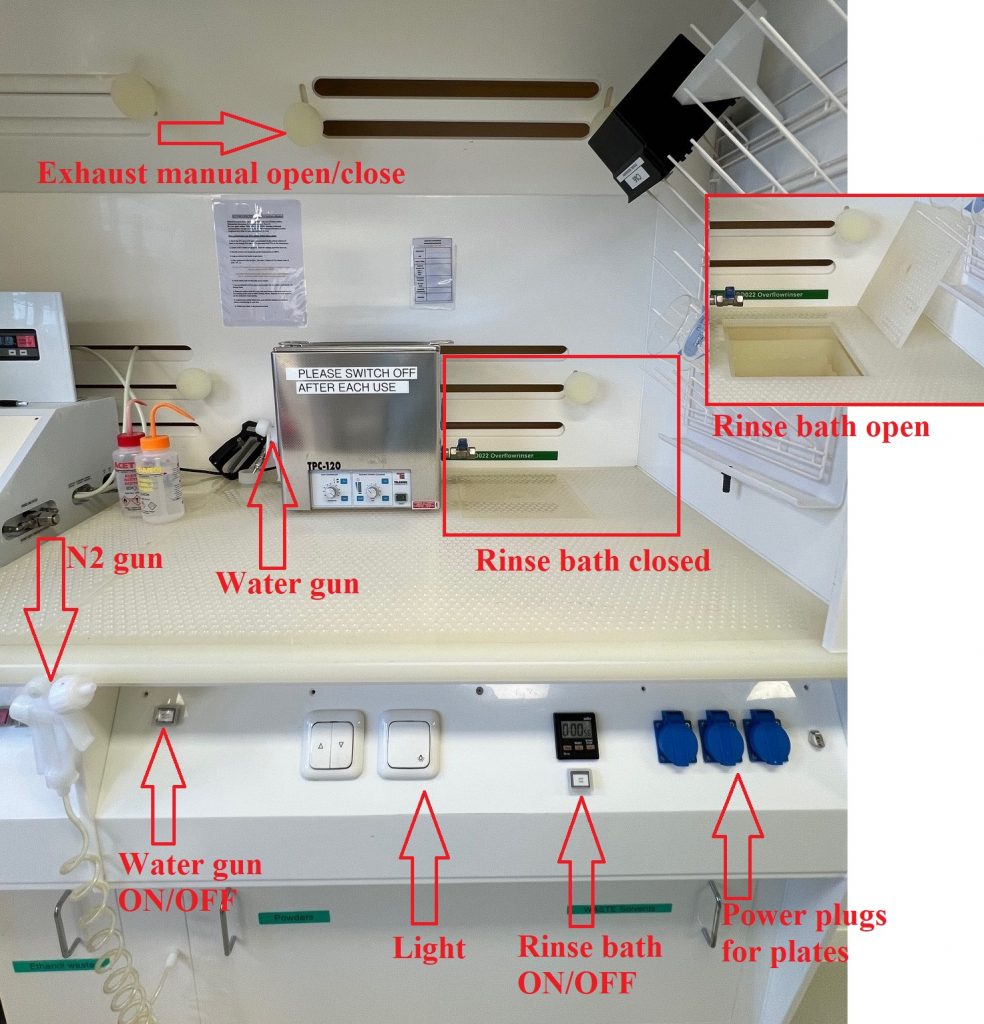Preliminary and fundamental remark:
- SAFETY OPERATOR MANUAL TO OPERATE ON CMi WETBENCHES (HERE)
Contents
I. Introduction
Zone 14 offers three wet-benches for use of acids, bases and solvents chemistry. They are all dedicated to a given type of chemicals so they give the opportunity to use standard and/or new wet etching recipes. The bath preparation is done by the user, which allows nicely adapting the chemistry (i.e. mixtures, concentrations and temperatures) to the needed applications.
Different types of holders are available for wafers or piece parts processing: available holders.
II. Solvent standards
The solvent bench is fitted with a heating ultrasonic bath and is used to proceed with regular cleaning or treatments that involve Aceton & IPA.
Rem1165, SVC14 or DMSO are NOT allowed on this bench
The bench is NOT intended to be used for lift-off !

III. New chemicals
If a new chemical or mixture, not listed above, is to be brought in CMi, different points must be all fully completed before introducing and using any new product:
- CMi staff is provided with detailed documentation:
– Safety Data Sheet (SDS), gathered by the user.
English version is required. Usually, this is accessible from suppliers’ website.
– Standard Operation Procedure (SOP), generated by the user (see template).
MSDS is required to complete important points of the SOP.
– Any additional information if needed. - Documentation is reviewed by a CMi committee to:
– Make a decision on the storage location and on the disposal procedure.
– Check equipment needed to ensure safe use of the product.
– Ask for modification/additional information if needed. - Upon approval from CMi:
– SDS and SOP are posted on CMi website.
– The product is introduced in CMi.
– The product is labeled with date of introduction and username.
– The product is stored at the location specified by CMi staff and mentioned in the SOP.
IV. Modus operandi
Different types of holders are available for wafers or piece parts processing: available holders.
- Login on the solvent bench zone 14 (it controls water supply to the bench)
- Put on single use nitrile gloves.
- Get a timer, plastic tweezers, spacers for bottom of beaker and the wafers ready.
- Fill a beaker with the required chemicals.
- Put the wafer in the chemicals using a plastic tweezers. Start the timer.
- In the case of a long process, add a cover, and label the setup (templates available on the window of the wetbench).
- When the process is done, take the wafer out and rinse it with 2 different beakers.
- If needed, additionally rinse the wafer into the water rinse tank or above it with the DI water gun.
- Clean three times and dry used bottles before replacing them into the cabinet.
- Put the chemicals into the corresponding waste bottle and rinse all used tool (beakers, containers, tweezers…) as necessary.
- Remove the single use nitrile gloves.
- Perform wet bench logout on zone 14 computer.
Any droplets of any kind MUST be removed from the wetbench before leaving it.
Suspicious droplets must be diluted in DI water using a tissue (2 to 3 cleanings/rinsings are necessary) and remaining water droplets must be removed with absorbent paper.